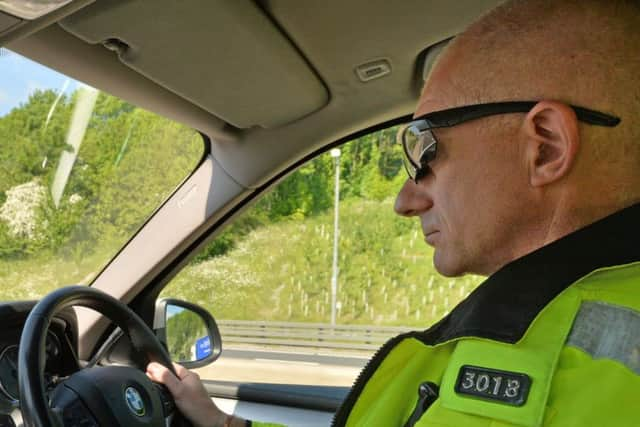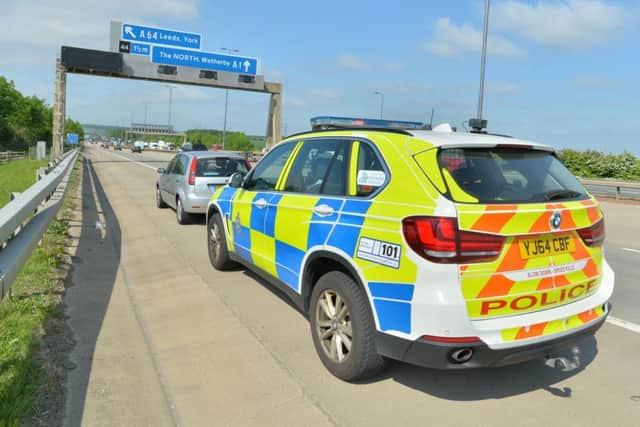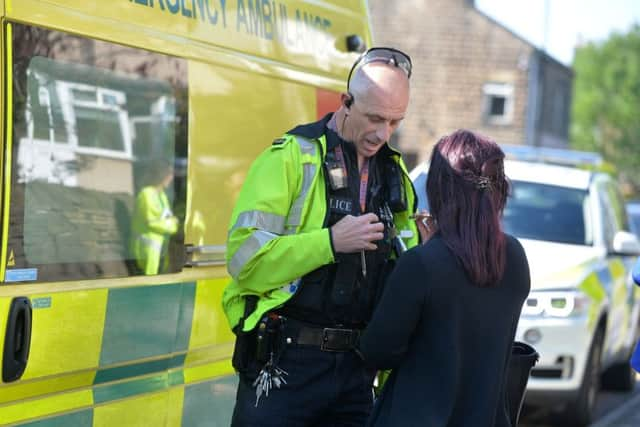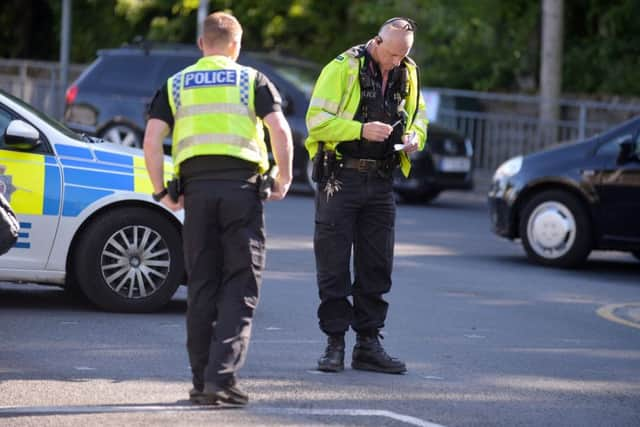On shift with West Yorkshire Police's Roads Policing Unit
and live on Freeview channel 276
In the fourth part of the YEP’s series on motorways, reporter Georgina Morris joins one of the team on a typical shift.
Within moments of getting into the patrol car, PC Chris Worsnop picks up a request for help on the A1 northbound where debris is blocking part of the carriageway.
Advertisement
Hide AdAdvertisement
Hide AdWe head straight out of West Yorkshire’s Carr Gate complex on the outskirts of Wakefield and within moments we’re moving south at speed towards the reported scene, sirens sounding and blue lights flashing to alert other road users of our presence.
Callers have reported debris on the road just past junction 39 but there’s no precise location, meaning PC Worsnop is scanning the northbound carriageway as we head far enough south to loop back up and lend a hand.
“Sometimes we get it on camera which is good because you get a better location,” Chris explains. “People just say we’ve just passed 39. You can go to the location and it’s wrong.”
On this occasion, other members of the Roads Policing Unit (RPU) get there first and work with colleagues from the Highways Agency to swiftly clear the carriageway and keep traffic moving.


Advertisement
Hide AdAdvertisement
Hide AdIt doesn’t take much on routes as busy as these for long tailbacks to build up, so the priority is clearing incidents like this one as quickly as possible and before they lead to any collisions.
One of 120 officers in the RPU, PC Worsnop’s main focus is on sections of the motorways in the eastern area of West Yorkshire – the M1, the M62, the A1(M) and the M621.
“My primary role is the network. However, I’ll get off onto the arterial roads if collisions come in,” he says.
“Likewise, if I get a job on that requires more vehicles, then they will come across to help me. Although we are given an area we don’t remain in that area. We’re very fluid.”


Advertisement
Hide AdAdvertisement
Hide AdWith the earlier issue cleared, PC Worsnop switches his focus to the drivers around us as we return north.
The Automatic Number Plate Recognition (ANPR) cameras on the car are constantly scanning for vehicles being driven without insurance or road tax, but the effectiveness of these patrols rests just as much upon the observational skills and instincts of the officers themselves.
PC Worsnop says: “We’re looking for anything that’s not right. Everybody should be travelling at a similar speed but you’ll see things that aren’t quite right. They’re travelling a lot slower. Are they on a mobile phone? Are they lost? Are they talking to a passenger?”


It’s not long before those observational skills lead PC Worsnop to spot a driver who is not wearing his seatbelt properly – one of the ‘fatal four’ offences that often play a part in crashes resulting in deaths on our roads.
Advertisement
Hide AdAdvertisement
Hide AdSirens, lights and flashing of the headlights all go unnoticed for a few minutes before the car indicates and pulls onto the hard shoulder.
The driver is led back to the police car, where he tells PC Worsnop that nobody ever taught him how to wear a seatbelt and he didn’t realise it should go over your shoulder.
He receives a ticket for the offence along with some stern words about the risk of him suffering greater injury in the event of crash, the significant response from the blue light services this would necessitate, the bed that would be taken up in an overstreched A&E unit.
Paperwork is completed, fingerprints are taken to go on file until the fine has been paid, and throughout it all the car can be felt swaying as larger vehicles and wagons pass by.
Advertisement
Hide AdAdvertisement
Hide AdAll this take places as the Watchguard camera system fitted in the car records external and internal footage along with audio, creating a comprehensive package of evidence that can be transferred directly onto the network at Carr Gate via a secure Wifi connection.


“It’s a very, very good system,” PC Worsnop says. “We’re having fewer challenges where people say I’ve never said that or I didn’t read [ the statement].”
There’s no let up though as a message soon comes in over the radio about what sounds like a serious collision in west Leeds involving a schoolchild.
Speed is of the essence as the ‘golden hour’ for gathering initial evidence begins and PC Worsnop needs to cover the ground between junction 44 of the M1 and the scene in Rawdon as swiftly as he can.
Advertisement
Hide AdAdvertisement
Hide AdThis is easier said than done once we’re onto arterial roads during a typical Leeds rush hour, with some drivers failing to react to the blue lights and sirens of the police car coming up behind them and others simply having nowhere to go.
“We’re not putting any pressure on them,” PC Worsnop says. “We’re just asking the question, can you let me through? The majority – 99 per cent of people – they say no problem and they do their damnedest to let you through.
“Just find a safe place to pull over. What you don’t want is for them to put themselves in a dangerous situation by going into a ditch or oncoming traffic.”
Throughout the journey updates are being fed through over the radio and PC Worsnop’s first port of call upon arrival is the waiting ambulance containing the 12-year-old boy, whose injuries are fortunately minor.
Advertisement
Hide AdAdvertisement
Hide AdBut there’s still a scene to be examined, damage on the car to be checked, independent witnesses to speak to and a very shaken up driver to interview under caution.
“All I can do is investigate how it happened,” PC Worsnop says. “If the boy is at fault then he gets some advice. If it’s the driver’s fault, I get the evidence to probably prosecute.”
Work eventually complete at the scene, it’s on to Leeds General Infirmary to speak to the boy about road safety and then back onto the network for whatever else the shift brings.
